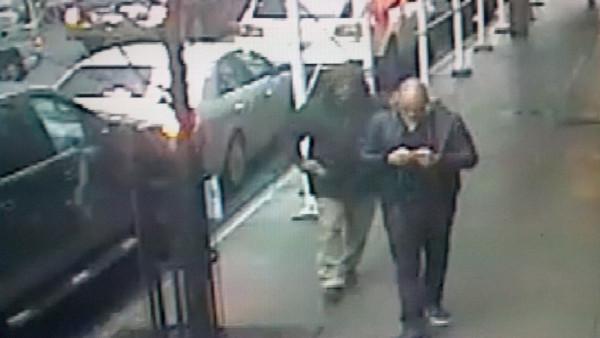It’s been a year since 31-year-old Brandon Lincoln Woodard was shot in the head at midday on a midtown Manhattan street. And it’s also been a year since I first wrote about Woodard’s murder, in a piece that ended with this jaunty, overconfident sentence: “Even though [Woodard’s killers] got away at the time, it’s only a matter of time before these guys get caught.” Well, here it is, a year later, and they still haven’t been caught. Is it really that easy to kill a man in broad daylight in the middle of America’s biggest city and get away with it?
Here’s what we know about the case so far. Brandon Woodard was a law student from Los Angeles. He had a history of small-time arrests, and, at the time of his death, police believed he may have been involved in the drug trade. In a June New York Times article about the case, an anonymous law enforcement official suggested that Woodard may have incurred the wrath of some violent drug dealers, perhaps over an unpaid debt or a missing shipment. We don’t know for sure.
Since the entire attack was caught on camera, we do know that, on Dec. 10, 2012, Woodard left a hotel in Midtown, turned onto 58th Street, and was looking at his phone when a man in a hoodie stepped up and shot him once in the head. The shooter got into a waiting Lincoln sedan, and the car was seen entering the Midtown Tunnel a little bit later. From there, the shooter and the driver appear to have vanished. How is that possible?
For one thing, Woodard’s killers appear to have been pros. Many murderers aren’t. They leave physical evidence behind for police to find, or they commit a similar crime later, or they talk about the crime to the wrong people, or their friends talk to the wrong people, and that’s how detectives develop leads that help them solve a case. Woodard’s killers—and their associates—made none of these mistakes. Yes, they shot their man in the middle of the day, but it’s not as if they left a fingerprint-covered gun lying next to Woodard’s body. A daylight shooting, a midnight shooting: If you leave no evidence and there aren’t any witnesses, it doesn’t matter what time of day you shot someone.
That leads into my next point: The killers were good, but they were also very lucky. There were no cops around to hear the gunshot and respond instantly. There were no eyewitnesses to call police with the killers’ descriptions and license plate number. The getaway car made it through the city without getting snarled in traffic. The shooting was caught on camera, but the footage wasn’t very clear. If police have found other, better footage of the murder, they haven’t made it public, and it hasn’t led to any arrests.
And, now, time is on the killers’ side. The most dangerous moments for the culprits were the hours immediately following the murder, with Woodard’s name in the headlines and the case at the top of the NYPD’s list of priorities. Now, with every month that goes by, the case becomes harder to solve, if only because other, newer cases are taking precedence. Detectives will pick Woodard’s murder back up if new information comes in. But logistics dictate that the case is not being worked as actively now as it was last December.
This doesn’t mean that the shooter will never be brought to justice. If Woodard’s shooting was indeed drug-related, then it’s entirely possible that police will eventually arrest someone who, in order to save his own skin, might volunteer information about the Woodard homicide. And if the case is eventually solved, I’m guessing it’ll be solved that way—thanks to a random informant who comes to the police, rather than the police unearthing this information on their own. But, then, I’ve been wrong about the Brandon Woodard case before.
